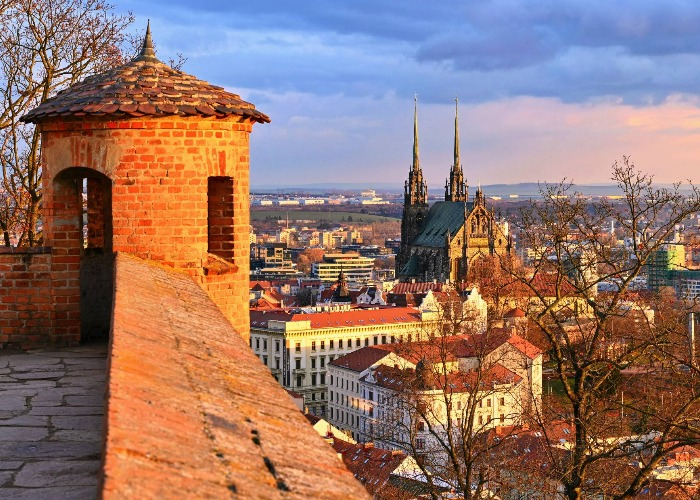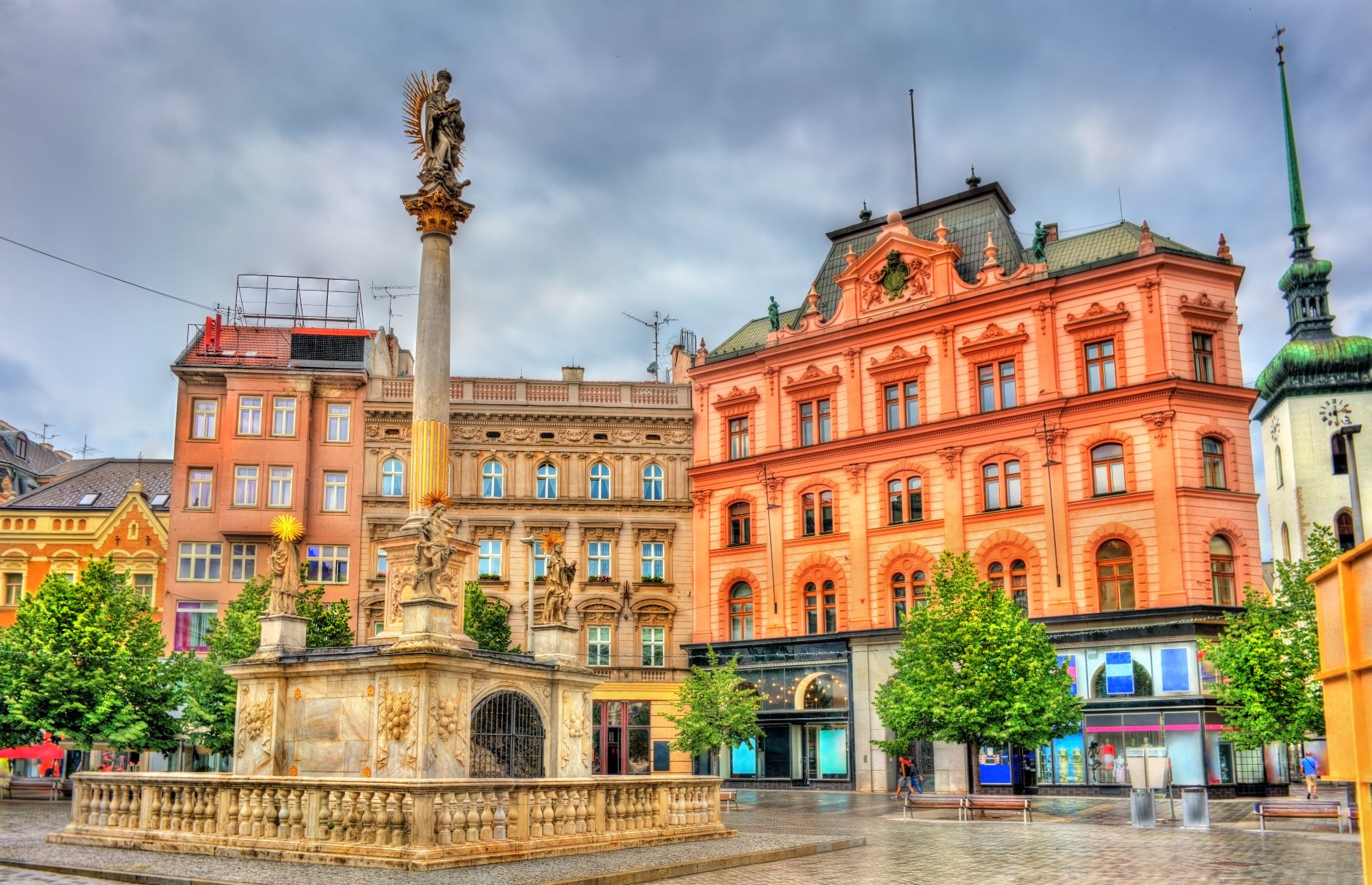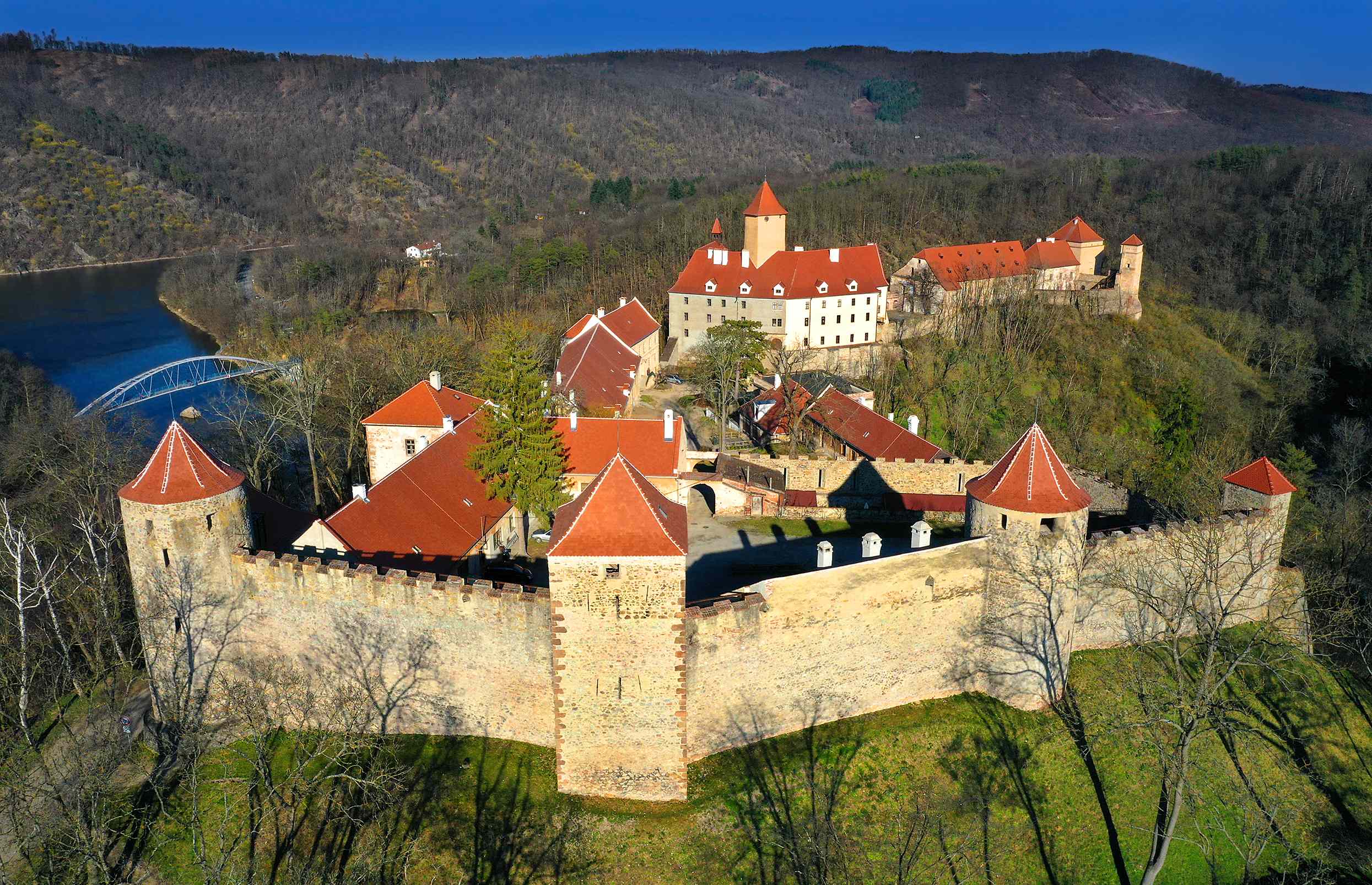6 reasons to visit Brno, Czech Republic

Caves, castles and world-famous lager: here's why this regional capital in the Czech Republic makes the perfect weekend away.
The Czech Republic's (also known as Czechia) second city, Brno is a great option for culture vultures and city breakers looking to avoid Prague's crowds. It has just a third of the capital's population but an even smaller fraction of its tourists and boasts an array of cultural, natural and historic sites that can compete with almost any city in Europe.
Brno is the traditional capital of Moravia, a region covering most of The Czech Republic's eastern half that's known for beer, castles and karst landscapes. Above the city, you can discover Brno’s past with a visit to Spilberk Castle, while scores of brewpubs and breweries punctuate the functionalist buildings below.
 Leonid Andronov/Shutterstock
Leonid Andronov/Shutterstock
The best of Brno awaits underground, where medieval labyrinths, eerie ossuaries and Cold War bunkers await curious travellers. Here are six reasons to visit Brno, The Czech Republic's beer-swilling second city...
For the castle on the hill
Looming large above Brno’s church spires and tower blocks is the magnificent Spilberk Castle. Follow the steep pathways through Spilberk Park to learn about the history of the fortress, which has stood guard over the city since the 13th century.
 Shchipkova Elena/Shutterstock
Shchipkova Elena/Shutterstock
Little remains of the original structure, but later Gothic and Baroque features still stud the castle walls. Discover Spilberk’s tumultuous military history inside the castle museum – from the Hapsburgs and the Nazis to the armies of Napoleon – before enjoying a city-wide panorama from the viewing tower.
The Czech Republic is a country of castles and history-lovers should also visit nearby Veveri Castle. Found seven miles (12km) from downtown, this royal bastion dates to the 11th century and enjoys a fairy-tale location amid the forested hills overlooking Brno Reservoir.
 Pecold/Shutterstock
Pecold/Shutterstock
For the Moravian history
Brno is proud of its history and rightly so since the city was once the capital of a grand medieval kingdom named Great Moravia. From Brno the kings of Moravia ruled vast tracts of central Europe, a fact that still informs the city's sense of self.
READ MORE: These are the most beautiful European castles
Moravian identity is still strong today and you’ll spot the white-and-red-checkered eagle of Moravia displayed on blue backgrounds across the city. You can find an oversized statue of a Moravian knight in the central Moravian Square and will hear Moravian dialect spoken all around. There’s even a small political party campaigning for Moravian independence.
 Aron M/Shutterstock
Aron M/Shutterstock
On weekends you can hear traditional Moravian music and taste traditional Moravian cuisine at the food market in Freedom Square, where locals often dress up in traditional Moravian red and white. If you want to learn more, head to the Moravian Museum, where you can discover the region’s history and culture in the second largest museum in Czechia.
For the functionalist architecture
Did you know that Brno played a pivotal part in popularising modernist architecture as we know it today? In the 1920s, the city’s architects helped pioneer a new style known as ‘functionalism’.
Functionalism did away with the outlandish flamboyance of previous eras, focusing instead on simple, smooth, practical materials that could be mass-produced in Brno’s burgeoning industrial factories.
The precursor to modernist design across Europe – there would be no flat-pack Ikea furniture without it – Brno’s brand of functionalism is best displayed by landmarks like the Zeman Café, the Avion Hotel and the Stiassni Villa.
 jn.koste/Shutterstock
jn.koste/Shutterstock
The most famous functionalist building you can visit is Tugendhat Villa, a UNESCO-recognised property built in 1930 for the Tugendhat family. The villa has a sombre story, since the Jewish Tugendhat family were forced to flee German occupation during the Second World War.
For spooky subterranean experiences
Brno’s underground world is arguably even more intriguing than the sights on the surface, as beneath the city streets lies a hidden network of ancient storage vaults and wine cellars.
 posztos/Shutterstock
posztos/Shutterstock
212 stone steps lead down to the 'Labyrinth beneath the Vegetable Market', where a guided tour will take you round the restored remnants of 3,281 feet (1,000m) of medieval tunnels and passageways. The food and wine trade was essential to medieval Moravia, and you’ll hear tales of the feuding wine merchants and boisterous brewers who worked underground.
For an even spookier sight, venture beneath the floor of the Church of St James, where the preserved remains of 50,000 medieval citizens reside in Europe’s second largest ossuary.
 Mikhail Markovskiy/Shutterstock
Mikhail Markovskiy/Shutterstock
A thorough search might also yield the hidden entrance to a secret nuclear bunker beneath Spilberk Castle. Built as an air raid shelter during the Second World War, 10-Z Bunker was converted into a nuclear bunker in 1959, and today you can tour the lead-lined tunnels to learn more about the dark days of the Cold War.
For the beers and breweries
With all that sightseeing you’ll probably work up a thirst, so head to one of Brno’s many breweries to sample the beverage Czechia is best known for. Czechs drink more beer per person than any other nation on Earth, so don’t be surprised that every other pub and restaurant in Brno doubles as a microbrewery.
In the city centre, U Tomana serves up light and dark craft beers in a modern setting, while Lokal provides classic lagers beside traditional dishes like goulash and cabbage soup.
The city also houses three major industrial breweries, including the homegrown Starobrno Brewery which has been brewing since 1325. Take a tour to learn more about the long history of Brno beer and finish by tasting their unfiltered speciality brews straight from source.
For the Moravian karst landscapes
It’s easy to escape Brno’s built-up environment with a day trip to the South Moravian countryside, where you’ll be awed by the caves, caverns and gorges that make up the Moravian Karst Protected Landscape Area.
 Roman Kybus/Shutterstock
Roman Kybus/Shutterstock
Less than an hour’s drive from the city, this nature preserve serves up 36 square miles (92sqkm) of unusual geological formations, including valleys, rivers and karst scenery connected by underground caves and above-ground hiking trails.
 Nadezda Murmakova/Shutterstock
Nadezda Murmakova/Shutterstock
As in Brno, some of the best sights here are found beneath the surface, where well over a thousand caves await. Take a boat cruise along an underground river in the Punkva Caves, marvel at stalactites and stalagmites in Catherine Cave and Balcarka Cave, or go completely off-grid in the Sloupsko-sosuvske Caves, which just so happens to be the largest cave system in Czechia.
READ MORE: The world's best underground attractions
Lead image: Montypeter/Shutterstock
Comments
Be the first to comment
Do you want to comment on this article? You need to be signed in for this feature